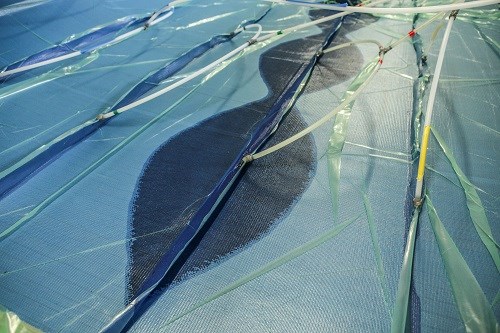Elium Liquid Thermoplastic Acrylic Used in Prototype Sailboat
The hull and bridge of a prototype sailboat made of Arkema’s recyclable thermoplastic composite material called a ‘first’.
The hull and bridge of a prototype sailboat made of Arkema’s recyclable thermoplastic composite material called a ‘first’.
Barely two years ago, a novel liquid thermoplastic resin was brought on the market by France’s Arkema (U.S. office in King of Prussia, Penn.). At JEC World 2016 in Paris last week, a recyclable thermoplastic composite based on Arkema’s Elium liquid thermoplastic acrylic was featured in the hull and bridge of the brand new Mini 6.50 Arkema 3 “Innovation” prototype sailboat.

This boat was presented as a genuine technological feat in boat building; the result of a joint venture set up between Arkema and Lalou Multi – TPE run by famed skipper Lalou Roucayrol and specializing in ocean racing. Elium is processed in the same way as the thermoset resins traditionally used in boat building and features comparable mechanical properties to epoxy resins. It is 30-50% lighter than steel and just as tough. It lends itself to complex designs and shapes and can be perfectly combined with fiberglass or carbon fiber.
Moreover, its thermoplastic nature makes Elium resin post-formable and recyclable, so that end-of-life parts made from this resin can be ground and reused to manufacture new parts. Said Danier Lebouvier, Arkema’s technical coordinator of this project, “This is an answer to a major issue of the treatment of end-of-life composites (a topic that is dear to the heart of skipper Lalou Roucayrol). Arkema is the first company to be marketing a resin of this type, and mini 6.50 Arkema 3 ‘Innovation’ will be the first boat built with this type of resin to be sailing the oceans.”
According to Fabienne Roucayrol, project manager at Lalou Multi, the objective of the construction of the new boat was that it would be a showcase for Arkema’s materials, as well as for building on Lalou Multi’s know-how in their processing, particularly with regard to the new Elium resin. After 18 months of R&D and countless processing tests, they achieved the right formulation in December 2015 for the hull and bridge, which are made entirely from the recyclable composite acrylic resin.
At the start of its market introduction, Elium applications were aimed at composites with fiberglass using the resin transfer molding (RTM) technique, according to Lebouvier. In the case of the prototype boat, the infusion and carbon fiber technique were used. “This was a more challenging situation in which we had no experience, in particular to manufacture large components. So we had to find the right conditions and fine-tune the product. We were able to do this, despite the tight timetable, thanks to very close collaboration between the Lalou Multi team, architect Romaric Neyhousser, and Arkema’s research teams.”
The Mini 6.50 Arkema 3 “Innovation” functions as a lab of sorts for Arkema’s products. The cockpit window and the hood were made from Altuglas ShieldUp, a nanostructured acrylic sheet that is transparent like glass but lighter and able to withstand the most extreme conditions. Globally well-known adhesives from Bostik, acquired by Arkema last year, were used for the structural assembly of the boat. In particular, the bulkheads and the bridge were glued to the hull with methacrylate and MS Polymers adhesives, and the foamed structures were assembled using a polyurethane adhesive.
Search for nearly 100,000 grades of polymers on the Universal Selector by clicking here.

Related Content
Soft Prices for Volume Resins
While PP and PE prices may be bottoming out, a downward trajectory was likely for all other volume resins, including engineering types.
Read MorePrices for All Volume Resins Head Down at End of 2023
Flat-to-downward trajectory for at least this month.
Read MoreGeneral Polymers Thermoplastics to Further Expand Distribution Business
NPE2024: Following the company’s recent partnership buyout, new North American geographic territories are in its sight.
Read MoreTracing the History of Polymeric Materials, Part 26: High-Performance Thermoplastics
The majority of the polymers that today we rely on for outstanding performance — such as polysulfone, polyethersulfone, polyphenylsulfone and PPS — were introduced in the period between 1965 and 1985. Here’s how they entered your toolbox of engineering of materials.
Read MoreRead Next
Lead the Conversation, Change the Conversation
Coverage of single-use plastics can be both misleading and demoralizing. Here are 10 tips for changing the perception of the plastics industry at your company and in your community.
Read MoreSee Recyclers Close the Loop on Trade Show Production Scrap at NPE2024
A collaboration between show organizer PLASTICS, recycler CPR and size reduction experts WEIMA and Conair recovered and recycled all production scrap at NPE2024.
Read More
























